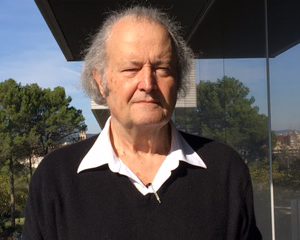
Dr. Trias is the principal inventor of the HELM™ method and the driving force behind its application to electrical power systems. He has a total of 35 years of experience, 11 in academia and 26 in industry. After 11 outstanding years in academia where he created a PhD program in Physics and led research that resulted in more than 50 scientific publications in prestigious journals, Dr. Trias transitioned his career efforts to transferring basic science to the most pressing needs of industry. He co-founded Aplicaciones en Informática Avanzada, S.L. (AIA) and EleQuant, Inc., where he is the Vice President of R&D, leading a team developing advanced algorithms for application to commercial market needs. Dr. Trias holds a BS in Physics (with High Honors) from the University of Barcelona and a PhD in Particle Physics from UAB in Barcelona. He was a Postdoctoral Fellow at Lawrence Berkeley Lab and a Visiting Professor invited by Nobel Prize Dr. C. N. Yang at the Institute of Theoretical Physics, State University of NY at Stony Brook. At the Institute of Theoretical Physics, Dr. Trias performed research on loop representation of Yang-Mills theories. Dr. Trias is the author of more than 50 publications in prestigious journals in physics. Dr. Trias now leads AIA’s and EleQuant’s R&D efforts and is responsible for innovation strategies and initiatives. His algorithmic inventions have been incorporated into several commercial software applications, with the active collaboration of the rest of the R&D members. In particular, his HELM (Holomorphic Embedding Loadflow Method) load flow algorithm is a break-through innovation (Patents Nos. 7519506, 7979239, and 8849614), and the key algorithmic engine powering AGORA (Advanced Grid Observation Reliable Algorithms), a commercial EMS system for real-time operation of power grids. HELM has been adapted to DC electronics and hybrid microgrids in collaboration with NASA GRC SBIR & STTR grans. He also holds nine US patents in the music industry, related to music classification and recommendation. Other important algorithms developed by Dr. Trias include: first and second generation Expert Systems applied to railway operations; optimization of hydraulic generation in complex river basins; a supervised learning algorithm (EVA) for learning expert classification criteria through binary comparisons; a hierarchical clustering method (ADAN) derived from classical field theory ideas in physics; a new general forecasting method combining phase state deterministic evolution, neural network learning, and symbolic artificial intelligence techniques; a conceptual development and implementation of Intelligent Observation Systems, a successful paradigm for the observation and intelligent interpretation of data; and a game-theoretical predictive model for the Spanish day-ahead electricity market.
HELM method has been extended to a n-node thermal network model, exploiting the fact that steady state of thermal network systems is described by a set of algebraic equations, just like the power flow equations in electrical networks. This method has been successfully implemented and tested in a software prototype that contemplates a simple (but non-trivial) thermal network model. In previous NASA projects, it was demonstrated that electric systems (DC and hybrid AC/DC grids) can also be solved using HELM methodology. The obtained common Lagrangean formulation of both systems, electric and thermal, allows for their integration under a unique system of equations that the HELM embedding can simultaneously solve. Future work focuses in the extension of this HELM methodology using Padé-Weierstrass techniques to analyze globally a thermal-electric system. This will allow the use of HELM in simulation tasks related to the design of thermal-electric propulsion systems, among other cases.